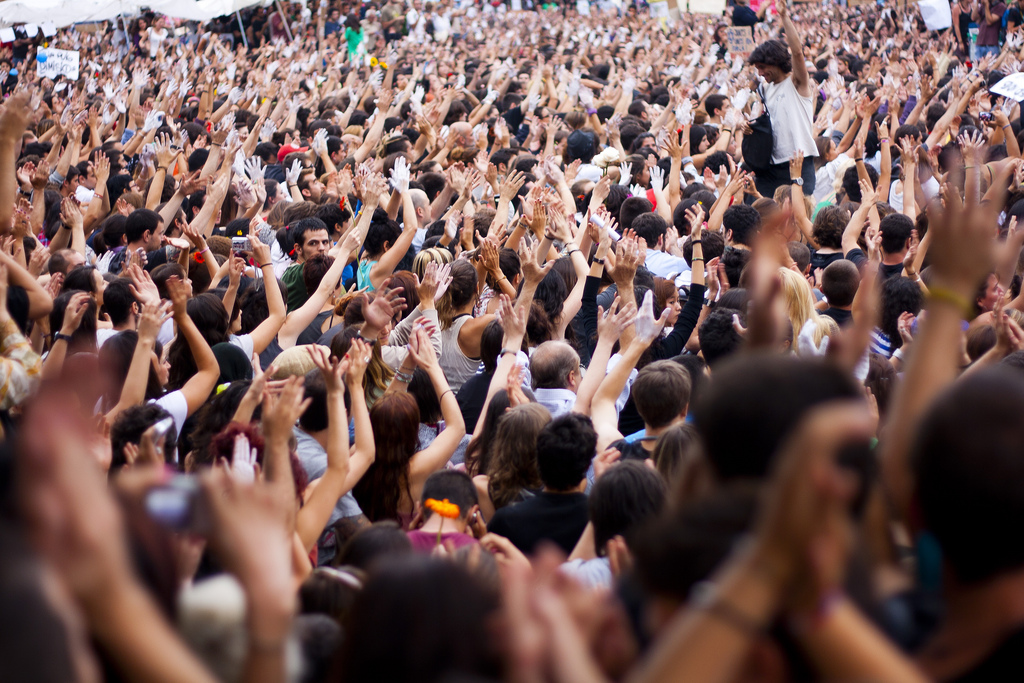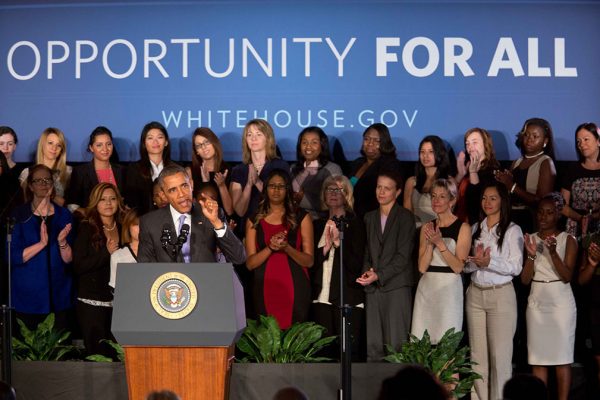As Mie Inouye tells us in her frank comments on her own activist persistence, solidarity is a desire that some of us need to practice. Often the satisfactions of common struggles never leave us. If we are lucky, we search for the next fulfillment even decades later. This desire applies to those organizing with people who share their oppression and those who come to witness and support.
Desiring solidarity is mostly a good thing. Sometimes experiencing it is transcendent—like catching the Holy Ghost. Such epiphanies—here Inouye’s piece again provides apt guidance and provocation—require thought and caution from those who experience it and want to do organizing ethically and well. Seeing the limits of possibilities also becomes a kind of self-care.
At its best the word “solidarity” gets shouted or sung. We can imagine hearing solid and then air in happy juxtaposition. Indeed, solidarity requires both: digging in and soaring, linking arms, and dreaming together. It looks easy at times, like a slow-motion soccer goal that makes us wonder why such magic does not always happen. And yet, there are plenty of scoreless draws in social movement histories. They can last for years. Movements splinter in ways suggesting that they were less solid than they seemed.
As Inouye grapples with this rhythm in her own life and the lives of her students after the rebellions following George Floyd’s murder, she arrives at an almost perfect example of a category of quandaries Immanuel Kant called antinomies—contradictory propositions having similarly convincing claims to truth. “Solidarity is an essential component of struggles for justice,” she writes, “but on the other hand, actually existing injustice renders it impossible.”
I was glad that she announced that dire position and glad she did not stop there, especially now that as a word, at least, solidarity is trending upward. The varied uses of the word have more than compensated for a steep decline in talk of “labor solidarity” from its peak in the early 1960s to 2019: we now talk of solidarity with Palestine, with Standing Rock, with Iranian women, with Ukraine.
Intellectuals have joined in solidarity’s proliferation with a flurry of articles and books. Some of the best of those appear in Inouye’s account. When I gave an American Studies Association presidential address in 2015 under the title “Making Solidarity Uneasy,” the limb I occupied was a lonely one. Following the murders of Trayvon Martin, Mike Brown, and others, just as talk of solidarity was picking up steam in an eruption of protest, I wondered whether solidarity was always a good thing—or whether it instead could be premised on leaving too much, or too many, out. What of those moments when the seeming ease of organizing gives way to harder times? Was solidarity really so easy, however much we desired it? At the time I found little theory to go on from the recent past; most of what I read to prepare for the speech came from the twentieth century. Now we verge on having a subspecialty that could be called “solidarity studies.” We get to think about how solidarity is deepened if it is “moralized” and think through the critical implications of how it is “racialized.” This important new work was invigorated by activity in the streets: Occupy and especially Black Lives Matter.
In the wake of Brown’s death, I sat in—mainly to bring snacks—on a St. Louis meeting planning the details, including chants, for a demonstration reacting to Brown’s killing. “Hands up / Don’t shoot” had by then emerged as a central slogan. Those chanting it typically raised their own hands with the first two words. The meeting sparked a discussion of whether white marchers should chant and raise hands. Did such street theater claim for whites a danger that in reality fell with deadly consequence primarily on the Black participants, both in demonstrations and daily life? Two positions emerged, by no means predicted by the race of the speakers. One urged that loud, unified chants made protests better. The other accepted as much but argued that the threat of Black “premature death,” as Ruth Wilson Gilmore puts it, constituted the very point of the demonstration.
Nobody won the debate, or should have. Marchers made their own choices. The difficulties in deciding flagged another antinomy, or maybe the same one outlined by Inouye. In several cities on a subsequent speaking tour, I brought up the small tactical debate in St. Louis lots, feeling it represented an effort to theorize how solidarity could and should work. In each city activists recalled having a similar exchange, either over that chant or theater involving “die-ins.”
Not surprisingly, the new scholarly interventions regarding solidarity reflect powerfully on race and white advantage. They have helped me to see that I grew up experiencing at least two kinds of solidarity, one named and the other not. My relatives worked as electricians and telephone operators, as well as in quarrying, pipefitting, school teaching, and printing. They overwhelmingly had union jobs and appreciated strike support, from the bringing of a meal to refusing to cross picket lines. Teamsters seemed heroes when they refused to deliver to struck workplaces even to my otherwise very conservative kin. I became a historian of labor in part to ensure that such experiences of collective power were not lost.
But the working-class town where I mostly grew up was also a “sundown” one, devoted to excluding Black people after dark. Even as critical race theory and critical whiteness studies emerged, I would have called that commitment white supremacy, not solidarity. The idea that solidarity could be anything but wonderful struck me as implausible. If it were imperfect, it just needed to expand, with class issues destined to provide a basis for unity in the very longest run. I thought that if sundown townspeople stood on their right to exclude, even as they practiced mutual aid for the included, what they were practicing was not (yet) solidarity.
In his classic work, The Division of Labor in Society (1893), sociologist Emile Durkheim insisted that the insularity of traditional society did count as a kind of solidarity. He termed it “mechanical” and found it terrifying. More recently, the late Tyler Stovall’s great work of history White Freedom (2020) argued that we can’t save the ideal of freedom by severing it from its links to racism; in similar fashion, Inouye, Juliet Hooker, and others practicing solidarity studies insist that racialized solidarity—that is, white solidarity—be named and combated. In its Jim Crow manifestations, solidarity certainly is terrifying, in ways that underline why “expanding the circle” cannot suffice to foster the solidarity that we desire. As anti-apartheid fighters told me decades ago in South Africa, the way to non-racialism is through race. So many antinomies. But as Inouye reminds us, confronting them—working through them—is still our best hope.








